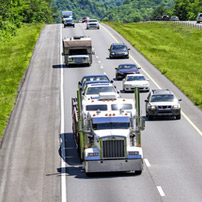Improving Traffic Patterns
February 19, 2016Improving Traffic Patterns Not Only Saves Time, But Protects Lives
 Almost everyone in the United States deals with transportation in some way. Whether you take a bus, train or subway to work or instead drive your own car, chances are that most of us have spent an awful lot of time “on the road”, getting from point A to point B. Standstill traffic, automobile accidents and traffic stops are just a few things that come along with travel – but isn’t there a better (and quicker!) way to get around?
Almost everyone in the United States deals with transportation in some way. Whether you take a bus, train or subway to work or instead drive your own car, chances are that most of us have spent an awful lot of time “on the road”, getting from point A to point B. Standstill traffic, automobile accidents and traffic stops are just a few things that come along with travel – but isn’t there a better (and quicker!) way to get around?
Texas A&M Transportation Institute, whose mission is to identify and solve transportation problems through research, has released a document that aims to improve traffic efficiency. But that isn’t all: this report is also meant to promote efficiency in a way that very well may help save people’s lives. The study tackled a few key issues, such as travel delays, fuel consumption and traffic control systems. There are a variety of options for traffic control systems. There are adaptive signals, which instead of turning red, orange and green at a certain time no matter what, actually analyze the flow of traffic and adapt (by means of a sensor system) to it. Traffic signals that are adaptive signals aid the flow of traffic and adjust appropriately, thus allowing for more efficient travel for commuters.
In Philadelphia, a centralized system has been implemented and has caused some improvements with traffic flow. The centralized system connects all traffic signals, which ends up making it easier to coordinate traffic changes on a larger and more uniform scale. One of the reasons that Philadelphia has this centralized system may be because of other information that the study revealed: in 2014 in Philadelphia, people spent 48 hours waiting in traffic as commuters and consumed 23 gallons excess of fuel.
Texas A&M Transportation Institute’s study shows us just how much time and gas can be wasted per commuter, annually, while traveling. But what the study does not directly point out is that by creating quicker and more efficient travel that the people who are traveling may in fact be safer. How many times have you been stuck behind the wheel in bumper-to-bumper traffic, anxious to get home or to an appointment on time? People would experience lower levels of stress or even anger from shorter wait-times in standstill traffic. In addition, traffic operating systems would be able to monitor traffic that was building up due to an automobile accident, so the amount of “rubber-necking” would also potentially decrease.
All in all, these changes are not only a good thing for commuters but also for the environment, by limiting the amount of excessive gas consumption. While it is always important to be cautious and careful while traveling, these new approaches to handling traffic will promote safer and efficient travel!
Philadelphia Personal Injury Lawyers at Galfand Berger, LLP Represent Victims of Car Accidents
Philadelphia personal injury lawyers at Galfand Berger have successfully represented clients who have been involved in automobile accidents. If you or any of your loved ones have experienced such a situation, an attorney at Galfand Berger, LLP can help. With offices located in Philadelphia, Reading and Bethlehem, we serve clients throughout Pennsylvania and New Jersey. To schedule a consultation, call us at 800-222-8792 or complete our online contact form.
 Google Screened
Google Screened
